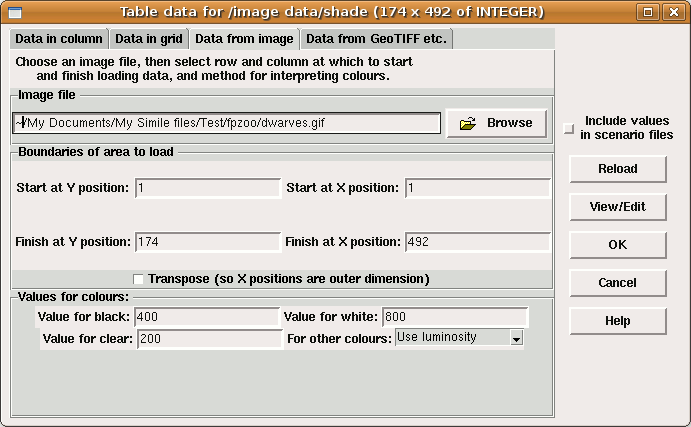Main menu
You are here
Working with external data : Data from image
Simile can extract a 2-dimensional array of data from an image file, with each pixel in the image corresponding to a datapoint. The image can be in any format supported by the Tkimg package, which is to say, most of them.
To get image data, use the third tab in the table data dialogue. The upper panel on this tab is much the same as on the data in grid tab, and does much the same thing; you browse to the file, and select the positions in the image at which to start and finish reading data if you do not want the whole thing.As in the case of a data grid, you can reverse each axis or transpose the axes.

The unique bit is the bottom panel, Values for Colours, by which you can instruct how each colour in the image is to be converted into a value in the data array. "Value for black" and "Value for white" specify the endpoints of the range of values. For other colours, in general the lighter it is, the further from "black" and the closer to "white" the corresponding value will be. There is a pulldown menu with a choice of methods for getting values from other colours; "use luminosity" averages the intensity of red, green and blue, or you can use any of these levels on their own. For instance, an area of pure magenta will give the same value as white if using red or blue levels, and the same value as black if using green level. If using luminosity the value for magenta will be (2*white+black)/3. You can also select "use 8-bit colourmap" which just assigns a unique value to each colour in an 8-bit coloured image, the intention being that these same values are also available to set the colour legend in the grid helper, allowing a version of the image to be reproduced.
Finally there is a field to enter a value which will be used where the image is transparent (clear). You only need to enter a value here if your image has some transparent areas. This value can be outside the range from black to white.
In: Contents >> Working with external data >> The table data dialogue
- Printer-friendly version
- Log in or register to post comments
